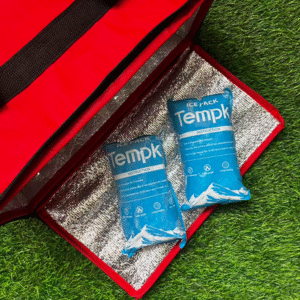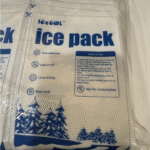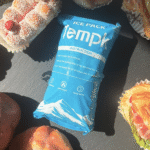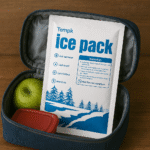How Do Dry Ice Bags & Packs Revolutionize Cold Chain Shipping in 2025?
Dans 2025, temperature-sensitive goods face increasingly complex transportation challenges. To ensure that perishable items like pharmaceuticals, nourriture, and biological samples reach their destination safely and without compromise, dry ice bags and dry ice packs are pivotal. These cold chain solutions provide a reliable, rentable, and environmentally-friendly method for maintaining ultra-low temperatures. This article explains the working principles of dry ice bags, their advantages over traditional cooling methods, and how businesses can maximize savings and operational efficiency.
-
Comment faire dry ice bags and packs function in cold chain logistics?
-
What benefits do dry ice packs offer over traditional ice and gel solutions?
-
How can businesses optimize their shipping costs using dry ice technology?
-
What are the emerging trends and innovations in dry ice technology for cold chain logistics?
How Do Dry Ice Bags and Packs Function in Cold Chain Logistics?
Dry ice bags and packs play a crucial role in maintaining the integrity of temperature-sensitive products during transit. Filled with solid carbon dioxide, dry ice sublimates at -78.5°C (-109.3°F) Pour maintenir des températures ultra-basses. Unlike water-based coolants, la neige carbonique se sublime en gaz, ne laissant aucun résidu liquide. This unique property helps avoid issues like water damage to products, making it an ideal solution for industries that require precise and clean temperature control, such as pharmaceuticals and biotechnology.
Key Characteristics of Dry Ice Bags and Packs:
-
Sub-zero cooling: La glace sèche maintient une température extrêmement basse, ideal for frozen food, médicaments, et matériel de recherche.
-
Longue durée: Dry ice packs stay cold for extended periods, even during long-distance shipments.
-
No melting water: The sublimation of dry ice into CO₂ gas avoids water damage, which can be a problem with traditional ice and gel packs.
| Avantage | Glace traditionnelle | Sacs à glace sec & Packs | Your Impact |
|---|---|---|---|
| Durée de refroidissement | Short-lived | Longue durée | Extended product shelf life |
| Risque de dommages causés par l'eau | Haut | Aucun | Reduced spoilage |
| Storage Efficiency | Volumineux, plus lourd | Compact, plus léger | More cost-efficient shipping |
Why Should Businesses Choose Dry Ice Packs Over Traditional Methods?
Dry ice offers several advantages over traditional cooling methods such as gel packs and regular ice. Here’s a breakdown of how dry ice packs outperform conventional ice:
-
Durée de refroidissement plus longue: Dry ice packs can maintain cold temperatures for up to 48 heures, compared to regular ice that begins to melt within a few hours.
-
Space and Weight Efficiency: Since dry ice is denser than water, it occupies less space and reduces the overall weight of the shipment, which can lead to substantial cost savings in transport.
-
Respectueux de l'environnement: La glace sèche sublime dans le gaz co₂, which does not contribute to water contamination or waste disposal issues, unlike gel or water-based packs.
Exemple:
A pharmaceutical company that switched from traditional ice packs to dry ice reported a 30% reduction in spoilage rates, et un 15% savings in shipping costs due to reduced packaging volume and fewer restocks during transport.
How Can Businesses Save Money with Dry Ice Packs?
Switching to dry ice packs can lead to significant cost savings in various ways:
-
Longer Cooling Periods: Dry ice packs reduce the need for constant replenishing during transport, lowering the overall cost of cooling materials.
-
Smaller Packaging Size: Their compact design allows businesses to optimize storage and shipping containers, reducing space and weight, which translates into lower shipping expenses.
-
Potential for Reuse: Dans certains cas, dry ice bags can be reused, especially the outer packaging materials, helping reduce waste and save money on additional supplies.
Étude de cas:
A global seafood distributor transitioned to dry ice for long-haul shipments, résultant en un 20% reduction in spoilage rates, improved product quality, and a decrease in transport-related costs by 18% in just one quarter.
What Are the Latest Innovations in Dry Ice Technology for Cold Chain Logistics?
As cold chain logistics continues to evolve, the demand for smarter, more efficient cooling solutions has increased. Dans 2025, dry ice technology has incorporated several innovative features that improve performance and offer new opportunities for monitoring and compliance:
-
Sacs de glace carbonique intelligents: Equipped with temperature sensors, these bags communicate with tracking systems, offering real-time temperature monitoring for sensitive shipments.
-
Matériaux d'isolation avancée: New materials have enhanced the ability of dry ice bags and packs to maintain low temperatures over extended periods.
-
Sustainable Packaging Materials: There is a growing trend toward biodegradable dry ice packaging, helping companies meet environmental goals and reduce their carbon footprint.
Derniers développements en un coup d'œil:
-
Smart Technology Integration: Real-time monitoring and tracking of temperature-sensitive shipments ensure quality and compliance.
-
Eco-Friendly Innovations: The adoption of biodegradable and recyclable materials for packaging reduces the environmental impact.
-
Enhanced Cooling Materials: New insulation technologies extend the effective cooling period, Même dans des conditions difficiles.
Frequently Asked Questions About Dry Ice Bags and Packs
Q1: How long do dry ice bags last in transit?
Typiquement, dry ice lasts between 12 à 48 heures, depending on the amount used and the insulation quality. Pour les expéditions plus longues, additional dry ice may be required.
Q2: Les sacs de glace sèche peuvent-ils être réutilisés?
Oui, the packaging material used for dry ice bags can often be reused, provided it remains intact and undamaged.
Best Practices for Using Dry Ice Bags and Packs
To maximize the effectiveness of dry ice bags and packs, Suivez ces meilleures pratiques:
-
Correct Layering: Place the dry ice packs in the shipping container to ensure they are properly distributed between the products.
-
Ventilation: Always use a container with ventilation holes to allow CO₂ gas to escape, Empêcher l'accumulation de pression.
-
Surveillance de la température: Use temperature loggers or IoT-enabled devices to track the temperature during transit and ensure your shipment stays within safe temperature ranges.
Conseils pratiques:
-
For pharmaceutical shipments, combine dry ice with phase-change materials (PCMS) for better temperature stability.
-
For food deliveries, ensure that dry ice is properly insulated and positioned to prevent direct contact with moisture-sensitive items.
Conclusion
Dry ice bags and dry ice packs continue to transform cold chain logistics, providing businesses with an efficient and sustainable solution for temperature-sensitive shipments. By understanding how to effectively use these innovative products, businesses can enhance their operations, réduire les coûts, and improve product quality and customer satisfaction.
Étapes suivantes:
Consider transitioning to dry ice for your next shipment to enjoy longer-lasting cooling, better storage efficiency, and cost savings. Contact Tempk today for expert advice on optimizing your cold chain logistics with dry ice solutions.
À propos du tempk
Et tempk, Nous nous spécialisons dans les solutions de chaîne froide, offering a range of high-performance dry ice bags and packs designed to enhance the safety and efficiency of temperature-sensitive shipments. Our products meet the highest standards of performance and sustainability, ensuring that your products stay safe and fresh during transit.
Appel à l'action: Reach out to Tempk for a consultation on how our dry ice solutions can improve your cold chain logistics.
























